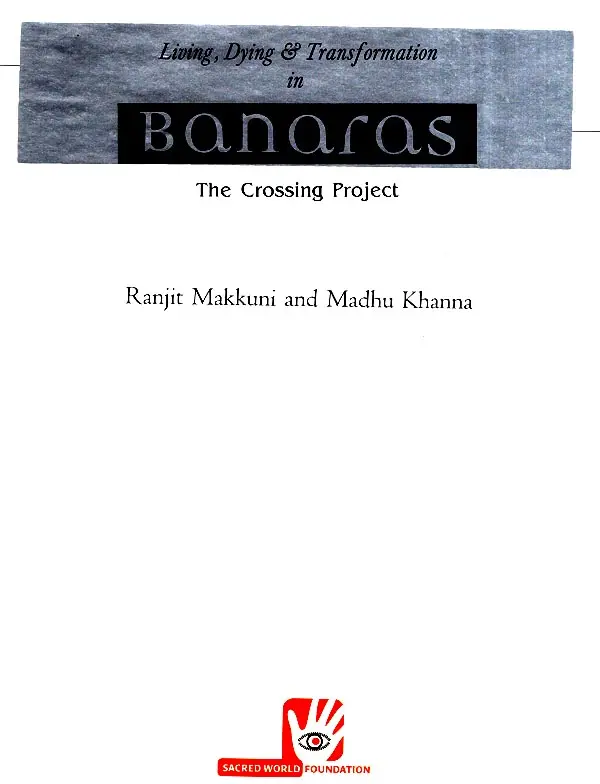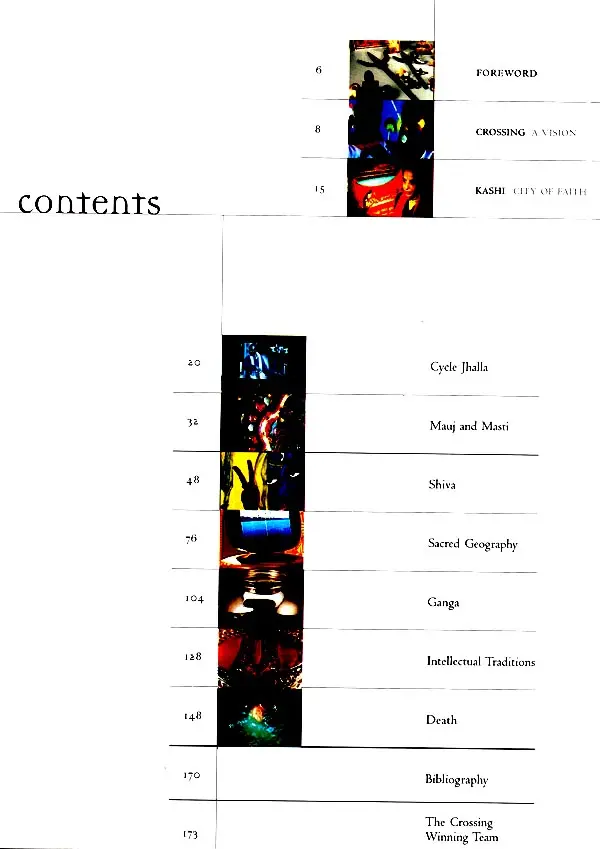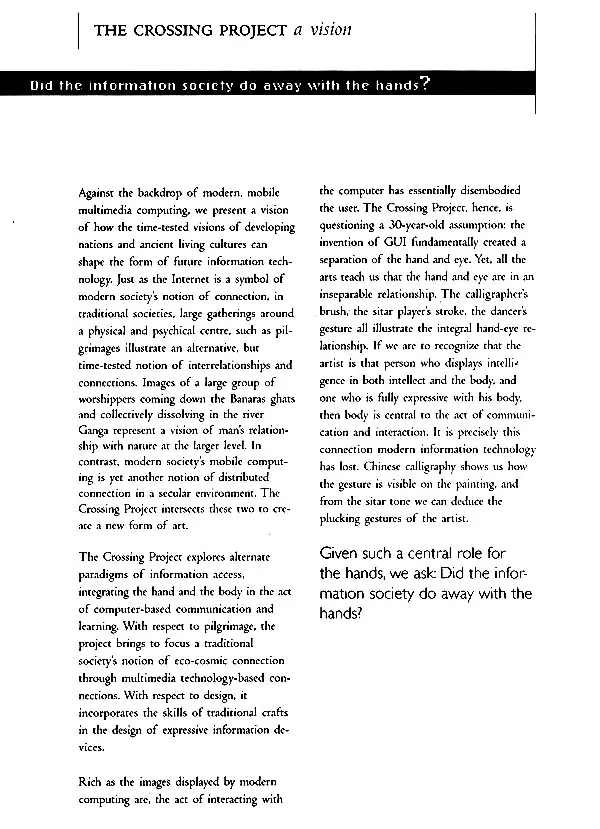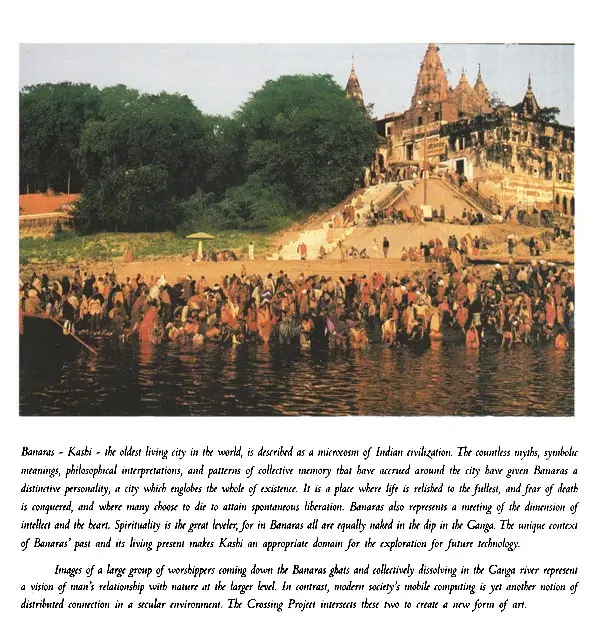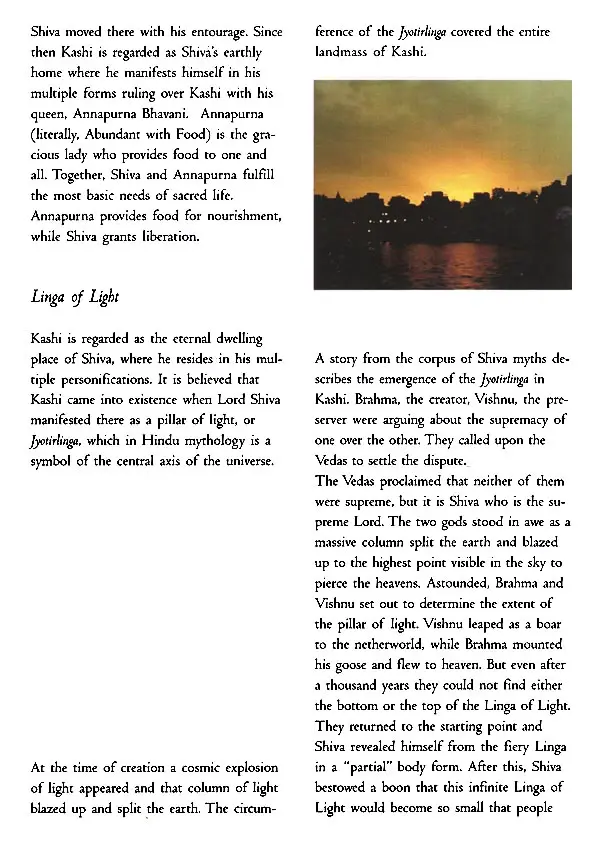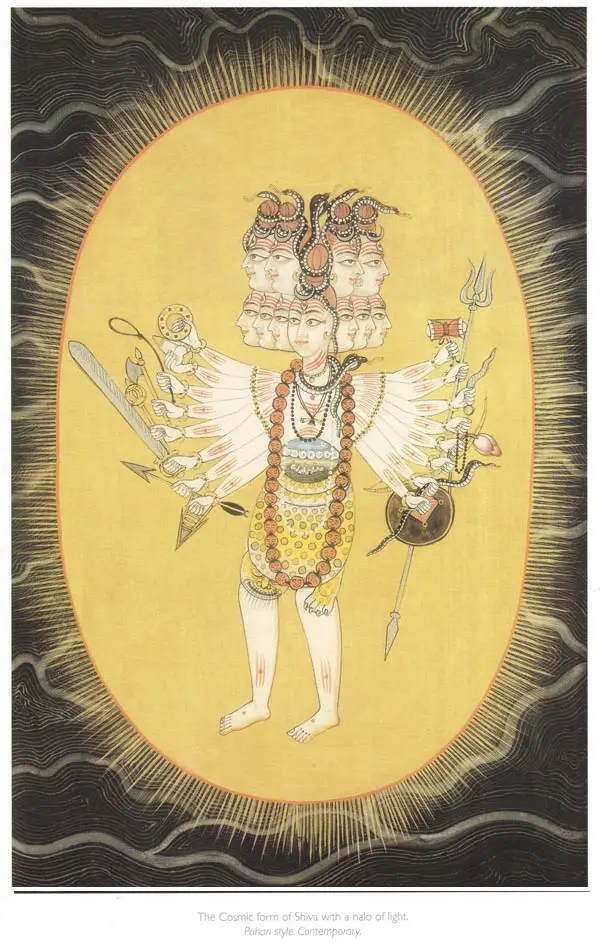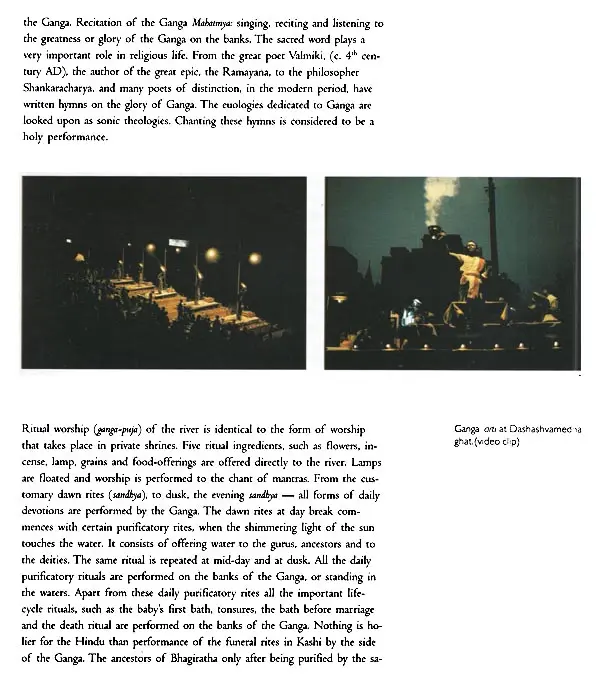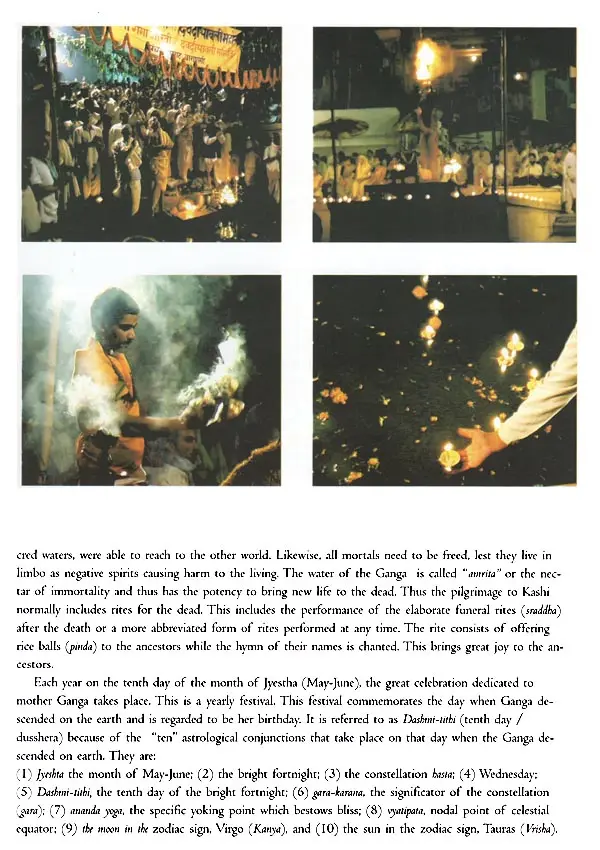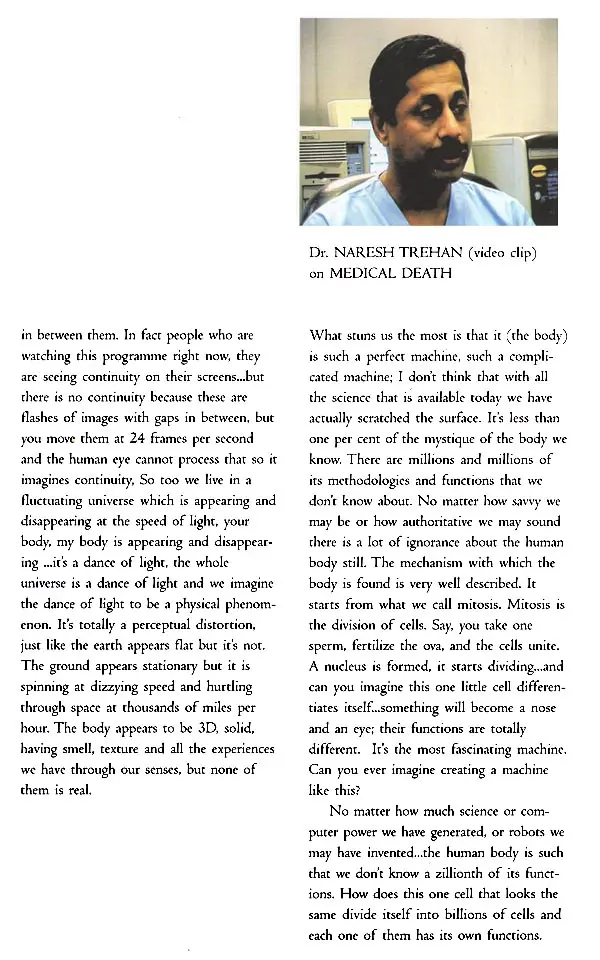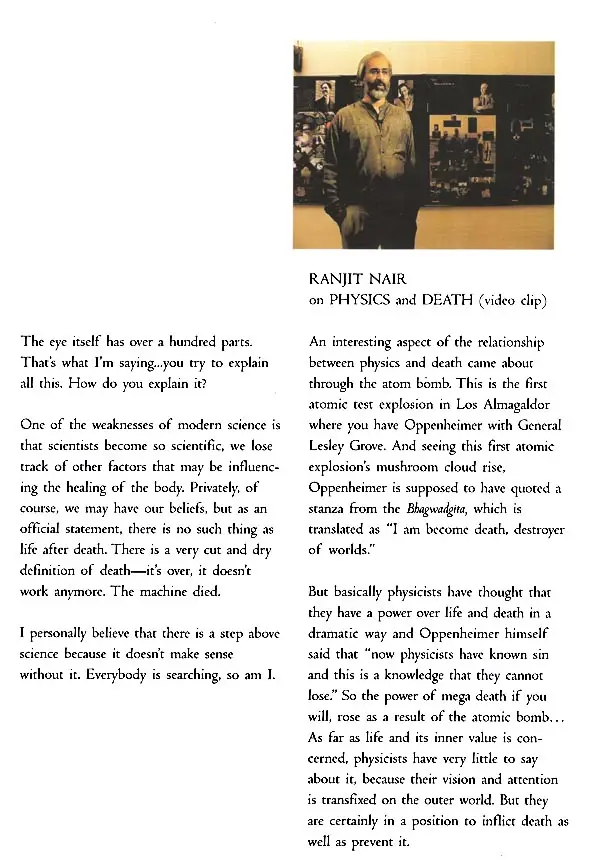
Living Dying & Transformation in : Banaras The Crossing Project
Book Specification
| Item Code: | UAF203 |
| Author: | Ranjit Makkuni and Madhu Khanna |
| Publisher: | Sharada Publishing House, Delhi |
| Language: | English |
| Edition: | 2003 |
| ISBN: | 8188934143 |
| Pages: | 174 (Throughout Color Illustrations) |
| Cover: | HARDCOVER |
| Other Details | 11.00 X 9.00 inch |
| Weight | 1 kg |
Book Description
We present a vision of Indian creativity and interaction design, combining traditional and modern technology. As computing technology proliferates in the world, retaining identity becomes an important value in the new millennium. Hence, the time-tested visions of developing nations and ancient living cultures can shape the form of modern information technology.
The Crossing Project is a pioneering effort bringing together futuristic, mobile, multimedia technology and archetypal content. With respect to technology, it questions the very form of a computing system and the Graphical User Interface paradigm, which has served as the substrate of modern computing systems for thirty years. The Crossing technology presents alternate paradigms of information access, integrating the hand and the body in the act of computer-based communication and learning. With respect to design, it in corporates the expressions of traditional arts and crafts in the design of expressive information delivery devices.
The Crossing Project demonstrates alternative forms of information access in which technology surrenders to the human hand. In this information age, in which our world has been progressively rendered abstract and learning concepts invisible, the Crossing Project has re-created forms that capture a civilization's primal symbols animated through embedded technology.
Ranjit Makkuni is a multimedia researcher, designer and musician. He is the President of the Sacred World Foundation, where he leads a design and research think tank pioneering new applications in culturally rooted computing. Prior to this, Ranjit spent nearly two decades at Xerox PARC where he carved our new spaces of multimedia computing interfaces and learning applications, starting from the visionary explorations of the Object Oriented programming language in the 1980, to body friendly, touch friendly and culture friendly multimedia computing in the 2000s. Ranjit's projects go beyond just demonstrating futuristic technology. In his current project, The Crossing, he brings to life the authenticity of traditional ideals on primal ecology, learning, and healing which are simultaneously contemporary. Participation of diverse viewpoints of people whose skills face the threat of extinction. Proficiency in multimedia technology as well as traditional art allows Ranjit to bridge multiple worlds between technology and art, the techno-man and traditional man, and between the developed and developing worlds.
Dr. Madhu Khanna, project scholar of the Crossing Project, earned her Ph.D. in Religious Studies from Wolfson College, Oxford University in 1986 with a specialization in Hindu Shakta Tantra. She has to her credit two popular publications: Yantra The Tantrie Symbol of Cosmic Unity, and the Tantric Way (co-author) both published by Thames and Hudson, London: with American, French, German and Danish editions. Her seminal work, The Sricakra of the Cult of Goddess Tripursundari, based on Sanskrit manuscript sources is forthcoming. She has researched the major interdisciplinary-cross cultural exhibitions organised by the IGNCA and edited the exhibition Catalogues on fundamental categories of civilizations (on the theme of Prakriti, Rita-ritu, and Man and Mask). She was awarded the Homi Bhabha Fellowship in 1991 to work on her project, "Indian Goddess and Feminist Consciousness". She is the President and founder-member of the Tantra Foundation, New Delhi. At present, she is an Associate Professor with the Indira Gandhi National Centre for the Arts, New Delhi.
When one thinks of a guru, one immediately pictures an image of the Buddha in orange robes sitting under a banyan tree, expounding knowledge. During my tenure at Xerox Palo Alto Research Center (PARC), I encountered many gurus. They were not all dressed in orange robes, but their mentorship was just as intense as the orange robed gurus under the banyan trees in India.
It is a great honour that the Crossing Project has been nurtured under the umbrella of modern teachers, John Seely Brown and Per-Kristian Halvorsen. John and Pet-Kristian were the pioneers who recognized that Silicon Valley may not be the only centre of technological innovation, and pushed us to shift our perspective to the rest of the world. It was their vision that led me back. from PARC to India, and discover the great richness of Banaras.
I would like to thank Carlos Pascual for the commitment of Xerox Developing Markets Operations in establishing a world-class research laboratory in India, The Crossing Media Lab. In addition, I value the support provided by Rajiv Batra and Khurshid Bandopadhyaya of Xerox India, for extending their visionary support to the project, especially when the world was englobed in financial recession.
Moving forward simultaneously on the design, technology and content vectors of the Crossing Project's research, in a short span of time, has been an immense challenge. From the early stages, Dr. Madhu Khanna contributed to the research and later joined me as a close collaborator, and provided her library, and the necessary space to manifest our creativity. Within moments, after a sizzling discussion on radio-frequency tags with Roy Want and Anuj Gujar at PARC, we found ourselves in an ancient village in Kondapalli, South India, renowned for toys and we were on to building the world's first physical virtual icons and tangible interfaces (see cover flap).
**Contents and Sample Pages**
